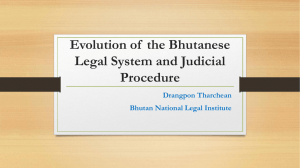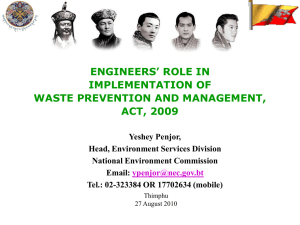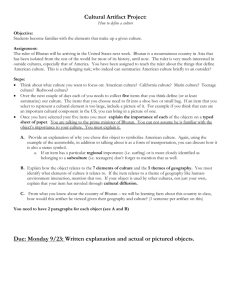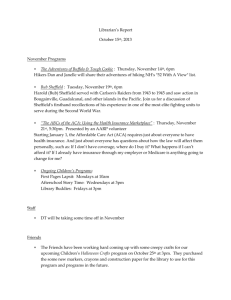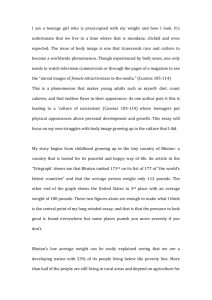! "#$%&'()!#*+$,#'*+! "-.!/011.234!56!2-.!781.!"95:3;81!#.<509;.<!&4<23202.!
advertisement
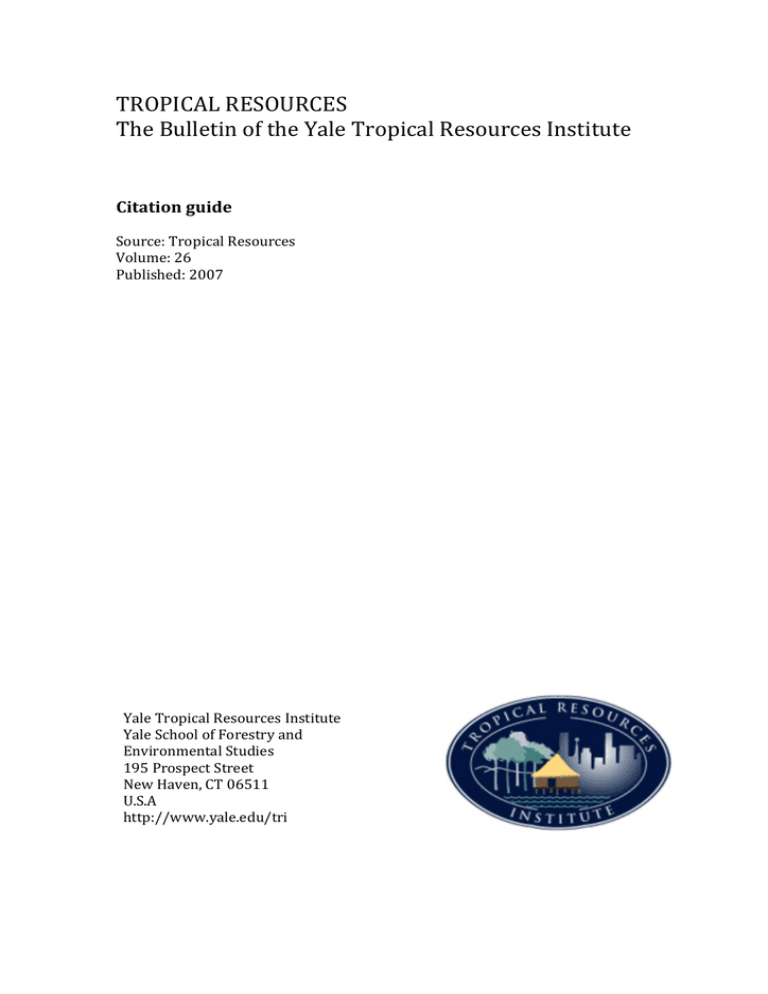
! ! "#$%&'()!#*+$,#'*+! "-.!/011.234!56!2-.!781.!"95:3;81!#.<509;.<!&4<23202.! ! ! ! ! "#$%$#&'!()#*+! ! +509;.L!"95:3;81!#.<509;.<! N510A.L!OJ! %0P13<-.?L!OIIQ! ! ! ! ! ! ! ! ! ! 781.!"95:3;81!#.<509;.<!&4<23202.! 781.!+;-551!56!=59.<29>!84?!! *4@3954A.4281!+20?3.<! BCD!%95<:.;2!+29..2! E.F!G8@.4H!'"!IJDBB! ,K+K(! -22:LMMFFFK>81.K.?0M293!! ! ! ! ! ! ! ! ! Himalayan Viagra, Himalayan Gold? Cordyceps sinensis brings new forces to the Bhutanese Himalaya by Rachelle Gould, MESc 2007 Partly hidden in the thick rainy mist at 5,000 meters above sea level, a man crouches on hands and knees on the spongy soil. Elbows bent, head almost at the ground’s surface, he searches in an old rock slide, huge boulders now entrenched in mossy dirt. Concentrating intensely, he performs a methodical eye-scan for about thirty seconds then low-leaps in a catlike, practiced advance. Here in the high Himalaya, he and hundreds of his countrymen will spend weeks in search of their mini-fortune: the fungus-headed dead caterpillars that are bringing millions of dollars to the Kingdom of Bhutan. The country of Bhutan, about the size of Switzerland, is perched in the Himalayan range and surrounded by China and India. With about 800,000 citizens, its population density is far lower than that of its massive neighbors. Bhutan is heralded as a bastion of ecological diversity, for its territory extends from the subtropical plains adjacent to India’s Terai, almost at sea level, to some of the world’s highest alpine habitat. Bhutan’s progressive-thinking King explicitly includes environmental stewRachelle Gould is a native of Southern California, and although she may not have lived there for a while, she will always have an affinity for the open air and the open hearts of her home state. She sees tremendous importance in challenging herself to see the world from many points of view. The opportunity to experience Bhutan to conduct this research changed her in ways she is still figuring out. She has lived and worked in Latin America for a number of years, and spent four years in Massachusetts while pursuing a BA in Environmental Science and Public Policy at Harvard. She plans to graduate from Yale in June 2007 with a Master’s in Forest Science. ardship in the country’s development philosophy, which has earned Bhutan an international reputation as a model of conservation consciousness. Yartsa goenbub (Cordyceps sinensis), abbreviated in Bhutan as bub, is collected in what is perhaps the country’s most emblematic environment: high altitude and rugged mountains, where life is physically demanding and spiritually imbued. C. sinensis is a fungus that parasitizes a moth larvae or, stated more graphically, a dead caterpillar with a mushroom growing out of its head. The fungal spores infect the live caterpillar as it feeds in late summer, and the mycelia take over its body after it has buried itself for winter hibernation (Photograph 1). The fungus is a coveted medicinal product in traditional Tibetan and Chinese medicine. Known in the West as “Himalayan Viagra”, its clinically proven effects range from increased sexual function to alleviation of amnesia, improvement of chronic bronchitis and asthma, and reduction of cancerous tumor size (Sharma 2004). The global marketplace began to highly value the species about 15 years ago, when the prowess of Chinese athletes who had ingested it gained international media attention. Since then, what was traditionally a moderate harvest for domestic use and the Chinese market has become a significant mini-industry in the Himalaya, earning the product another name: “Himalayan Gold”. Until 2004, Bhutanese law prohibited the collection or sale of bub. But enforcement of any law is difficult in the wind-whipped mountains where bub grows—a strip of jagged peaks and small frozen meadows along the oxygenpoor border with Tibet. Before 2004, primary Tropical Resources Bulletin 63 Rachelle Gould Photograph 1. Cordyceps sinensis before and after cleaning. Both the fungus and the caterpillar are medicinally valuable. Photo R. Gould collectors in Bhutan were Tibetan poachers and local yak herders, who supplemented income from their nomadic seasonal lifestyle with illegal sale over the border to Tibet. Thus money, in the form of dried fungus-infected caterpillars, was flowing over high mountain passes and into Tibet year after year. In 2004 the Bhutanese government realized that valuable income was leaking through its borders due to its “no-take” policy, and created a system to regulate the collection and sale of bub, based largely on research such as that conducted by Namgyel (2003). According to a new policy, “local” Bhutanese can obtain harvesting permits for a nominal fee. But the definition of “local” varies throughout the country, and in some places, citizens who have never visited alpine regions receive permits and trek up in pursuit of their fortune. Due to scarce and uncertain information on the biology of C. sinensis, the government has no guidelines for the creation of an ideal management regime—one that would allow for harvesting while sustaining the resource. The government’s Renewable Natural Resource Research Centres are currently engaged in research on the biology of C. sinensis, but in the immediate term, the Division of Forests has 64 Volume 26, Spring 2007 implemented a precautionary policy. While the government does not explain the specific rationale behind the policy, the goal seems clear: to limit collection by imposing restrictions on both the duration and quantity of collecting. The main components of the policy are: collection is allowed for a limited period (in 2006, May 15 to June 15); collectors should leave in the ground two of every five specimens encountered; and all bub must be sold in a series of auctions that the government holds each summer. Bhutan’s National Environmental Report describes the land-based lifestyle of the herders as “a microcosm of sustainability” (NEC 1998). But with the recent possibility of a fungus fortune luring farmers from lower elevations to the alpine ecosystem, the iris-sprinkled yak pastures 5,000 m above the sea feel more footsteps per season than ever. As the glitter of the Himalayan gold rush brings new money into the alpine ecosystem, the herders’ microcosm receives a jarring that Bhutan ignores at its own risk. In the absence of detailed biological data about C. sinensis and social data about its collection, the precautionary policy described above is admirable. I followed collectors to investigate the on-the-ground reality of how Himalayan Viagra, Himalayan Gold? that policy is being implemented. By combining multiple information sources, I attempted to discover how the management of bub plays out on the ground. Methods I appraised two stages of the bub value chain: collection and marketing. My main methods were participant observation, semistructured interviewing and key informant interviews. To understand the collection stage, I trekked to one of the collecting camps (4,500 m) and collection sites (5,000 m) in the Bumthang district. I spent two days with the collectors and seven days in transit and in conversation with yak herders and army personnel. Since my interviewing was done in multiple situations—sitting at hearths in huts, climbing up steep trails, during tea breaks at collecting sites—I was unable to ask every question of each of 58 total respondents. To investigate the marketing stage, I attended the two-day bub auction in the Bumthang valley (2,800 m). I interviewed a total of 23 people: sellers (farmers and herders), buyers (Bhutanese professionals), and government officials. In both of these situations, I used observation and semi-structured interview techniques. To gain information on the status of management in Bhutan, I conducted key informant interviews. Interviewees included local government leaders (gup1 and dzongda2), the district forest officer, the director of pharmaceuticals at the National Institute of Traditional Medicine and a Bhutanese government official whose doctoral research investigated the effect of the pre-2004 ban on collecting bub. Results The first consistent result of this research was that not a single collector adheres completely to the new policy. While no collector adheres to all requirements of the new policy, collectors more closely observed the time limit than the harvest limit. Even so, only 35% of collectors reported that they would finish collecting by the established end-date; the other 65% said they would continue harvesting for at least three days past the legal end-date. The “leave two of every five” rule is even less closely observed: while every single respondent knew that he or she was supposed to leave some of the bub s/he found, not a single collector asked about the harvest protocol follows it. The “leave it” rule is difficult both to follow (for shivering collectors on their knees) and to enforce (for the 10 or 20 forest rangers patrolling expanses of mountainous terrain). Collectors’ reasons for not following the rule fell into three main categories. The most dominant answer (given by 51% of respondents) was a frank question: “It’s so difficult to find just one; when we find some, how could we just leave it?” (Photograph 2). Another 15% of responses expressed the same hesitancy to relinquish a hard-earned finding: “if we follow the rule and leave it, someone else will just come and pick it up” (Photograph 3 ). And 34% of respondents justified not following the rule because they believed that no matter how many people collect or how many each person takes, “they” will always miss one or two, leaving plenty for reproduction of the species. A second result was that the majority of those interviewed knew relatively little of the biology of bub. While numerous respondents reported that “older” yak herders had knowledge of bub’s biological details, I encountered none of these older generation sages. Of 53 collectors asked, 84% either had no knowledge of bub’s biology or shared information inconsistent with the basic life cycle described above, which is essentially undisputed within the formal scientific community. Biological information is apparently available in some form, however, for the remaining 16% of collectors questioned called bub a mushroom and exTropical Resources Bulletin 65 Rachelle Gould Photograph 2. Bub before harvest. The difficulty of finding bub is demonstrated by this individual just as the collector begins to remove it from the ground. Only the white part of the bub –a small spongy stick that blends in with the surrounding vegetation– is visible before harvest. Photo R. Gould plained that mushroom “seeds” (i.e. spores) affected another living creature in some way. The third consistent result of this research was the yak herders’ concern about the impact that these new collectors have on high alpine environment and, quite inextricably, on their livelihoods. The herders’ comments about the changes in the past three years, since the legalization of harvest, were notably consistent. Every herder gave almost the same list of impacts: the new collectors degrade the meadow vegetation—which sustains the yaks and consequently the yak herders—by digging and overturning soil to extract bub and by bringing cargo horses that remain grazing in the meadows for as much as a month. They affect the scarce fuel source for humans by uprooting slow-growing shrubs for firewood (as opposed to pruning, which allows regeneration). And to personalize the insult, collectors arriving before the herders steal the firewood the herders had stashed to dry the previous year. Even more blatantly, they use the wooden shingles from the herder’s huts, painstakingly hand-hewn and caravanned up from lower forested elevations, to fuel their campfires. One herder concisely summarized the comments of his fellow herders: 66 Volume 26, Spring 2007 “It’s good that the government issues permits. But permits should go to people familiar with this environment. From the environment’s point of view, the permit issued is more damaging.” In addition to those immediate impacts on their material livelihoods, for 67% of the herding families interviewed the most serious effect of the new collectors is the upset they cause to the spiritual forces in the mountains. In Bhutan, lakes, which are rare due to the dynamic topography, are the dwelling places of spirits and spiritual forces. But lately, water levels in the lakes have been lower and more unpredictable than normal. With a new shroud of respect and deference, these families quietly shared that the spirits are obviously not content with the new situation. Discussion My research highlighted three specific and yet significant concerns related to the current management of bub in Bhutan. First, the majority of collectors do not follow the policy’s protocol, apparently because they do not see the logic in the collection rules. Second, most of those who are collecting know little about Himalayan Viagra, Himalayan Gold? the species’ biology. Third, regardless of the impact of harvesting on bub in particular, the rush of people to the high alpine region presents a stress that the fragile habitat may not be able to long endure. Bhutan does not need to look far for evidence that the economically and medicinally potent bub requires careful management. In neighboring Nepal, collection season has attracted thousands to the mountains, which has raised concerns about the sustainability of the recently-popular harvest (Sharma 2004). The significance of the product in the local economic and social context is also poignantly demonstrated by the fact that the Maoist revolutionaries currently challenging the Nepali government are funding a significant portion of their efforts by controlling the trade of bub (Roka 2006; Schweithelm 2006). He who controls bub has power. In the minds of the yak herders, who arguably know this area best, the spirits have a clear message that should not be ignored. The new visitors to this ecosystem do not understand its uniqueness, its fragility. Bub has the potential to elevate the incomes of Bhutan’s farmers, but this research suggests that if some change is not made, that potential may be trampled beneath the eager soles of happinessseeking citizens. As my abbreviated foray into the collecting world proved to me, each bub is found at a cost of foggy kilometers trekked, fingers white with cold, wet and pebble-indented knees. The conservative harvest limits recently implemented may appropriately pave the way for a policy based on more detailed information, and they may appeal to international aid and environmental agencies. But the physical hardship necessary to collect combined with the gold-like value of the product make each individual collector understandably unwilling to let any bub sit quietly in the thawing dirt. Conclusion As more collectors rush to the gold at the top of their country’s hills, Bhutan will be forced to deal with the harvest of bub more comprehensively. Global market forces have reached the prayer-flag-adorned mountain passes of Bhutan, and those forces present challenges that require proactive solutions. One obvious step toward those solutions is underway. Bhutan is well aware of the need for further information on the biology of bub, and research teams understand more of its life Photograph 3. Collectors in search of bub. A typical day’s harvest varies greatly—from nothing at all to a few hundred fungus-headed caterpillars. Photo R. Gould Tropical Resources Bulletin 67 Rachelle Gould cycle every year. This information will help to refine the specifics of the management regime that will allow for harvesting of bub without the destruction of its populations or the systems within which it lives. An important element of the research program will be to share both the questions and the results with collectors. That sharing will be especially important if the management approach described below is taken. Even when a biologically logical management regime is determined, implementation of that regime may be a challenge. The issue of bub is a fairly classic instance of an open-access dilemma. Experiences with similar situations, although in entirely different contexts, suggest potential solutions. One such example with over 70 years of documentation is the lobster fishery in the state of Maine (Dietz et al. 2003). Maine’s lobster fishermen are locally organized, territorial, and have established a system of bottom-up rules regulating the taking of lobsters; the result is a strong sense of stewardship toward the resource. That sense of stewardship is not present in Maine’s groundfish fishery, which occupies the same area but which has been managed largely by the United States government. While groundfish stocks and catches “have never been so low,” the lobster catch is “at an all-time high” (Acheson 2006). At least one Bhutanese scientist identifies some type of community property rights scheme as the preferred option for the conservation of medicinal plants within the context of Bhutan today (Pradhan 2006). In much of Bhutan’s varied landscape, traditional management regimes were based upon a user group’s long-term perspective on resource use, which likely resulted from a sense of responsibility toward that resource. The current bub policy approaches such community rights to the resource with its limitation to “local” harvesters. Perhaps the next priority for Bhutan’s Department of Forests is to uniformly define what its policy means by “local”, and then to consider transferring a sense of stewardship of 68 Volume 26, Spring 2007 Himalayan Gold to those “locals”. The best course of action with bub may be in Bhutan’s own recent past, but will probably only surface if “locals” once again feel the honor and the responsibility of caring for the resource. Aknowledgements This research would have been impossible without the aid of so many. Professors Bill Burch, Paul Draghi and Mark Ashton—constant sources of wisdom, sanity, direction and profound insight shared simply. Dechen Dorji, my Bhutanese director and friend, an impressive combination of sage thinker and logistical mastermind. The staff of the Ugyen Wangchuck Environment and Forestry Institute, whose generosity and care facilitated research and life in innumerable ways. Forest Ranger Wangchuck Wangchuck, patient translator and summer-long research partner and friend. Dorji Wangchuck, flawless Forest Guard and impeccable guide, whose comfort, knowledge and friends in the wind-whipped mountains kept us safe and brought us many opportunities for learning and sharing. And lastly, so many collectors who, despite exhaustion and cold, shared their stories and their firesides. Endnotes 1 Roughly equivalent to a mayor or county supervisor. 2 Roughly equivalent to a state or district governor. References Acheson, J. M. 2006. Lobster and groundfish management in the Gulf of Maine: A rational choice perspective. Human Organization 65: 240-252. Dietz, T., E. Ostrom and P. C. Stern. 2003. The struggle to govern the commons. Science 302: 1907-1912. Namgyel, P. and Tshitila 2003. Rare, Endangered, Over-exploitation and Extinction of Plant Species. Putting Cordyceps—a high value medicinal plant—to Test. Council of Research and Extension and Bhutan Trust Fund for Environmental Conservation. Thimphu, Bhutan. Himalayan Viagra, Himalayan Gold? National Environment Commission (NEC). 1998. The Middle Path: National Environment Strategy for Bhutan. Royal Government of Bhutan, Keen Publishing Thailand Co. Ltd, Thailand. Pradhan, R. 2006. Conservation of Medicinal Plants and Their Ecosystem in Bhutan. Conference on Medicinal Plants. National Institute of Traditional Medicine, Bhutan. Roka, K. 2006. Interview with district forest officer of the Myagdi District. Schweithelm, J., R. Kanaan and P. Yonzon. 2006. Conflict Over Natural Resources at the Community Level in Nepal Including its Relationships to Armed Conflict. ARD, Inc. for USAID. Sharma, S. 2004. Trade of Cordyceps sinensis from high altitudes of the Indian Himalaya: Conservation and biotechnological priorities. Current Science 86: 1614-1619. Source: Rhind, William. 2004. The Vegetable Kingdom. Fine Rare Prints. Available at: www.finerareprints.com Tropical Resources Bulletin 69
